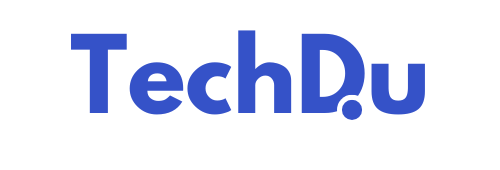Predictive analytics has revolutionized credit risk assessment, empowering lenders to make smarter, faster decisions while navigating the delicate balance between accuracy and fairness. By harnessing advanced algorithms and machine learning, these tools analyze vast datasets—think payment histories, credit scores, and behavioral patterns—to predict the likelihood of loan repayment with remarkable precision. But accuracy alone isn’t enough; ensuring fairness in these models is critical to avoid bias and comply with evolving regulations like the Equal Credit Opportunity Act (ECOA). From reducing financial losses to fostering equitable lending, predictive analytics is transforming the financial industry. In the following sections, we’ll dive into how these algorithms work, explore strategies for balancing accuracy with fairness, and highlight real-world applications that drive success in credit risk management.
Key Takeaways
- Responsible credit risk algorithms deployment is crucial for the health of our financial system. It protects against reckless lending and promotes the overall financial system stability around the world.
- Moving away from intuition-based lending and toward data-driven approaches is critical. Through the application of big data and predictive analytics, we can accomplish more precise and equitable credit determinations.
- Combining existing credit scoring models with new artificial intelligence tools, like machine learning, significantly improves predictive accuracy. It’s a reflection of the changing demands of today’s financial markets.
- Utilizing alternative data sources, such as utility payments and social media activity, can enrich credit risk models. It requires careful handling to avoid bias and ensure equity.
- Focusing on explainable AI and transparency in underwriting algorithmic decisions fosters greater trust from borrowers and helps ensure alignment with emerging global regulatory standards.
- Regularly updating and stress-testing credit risk models, while exploring emerging technologies like AI and blockchain, helps financial institutions remain resilient and future-ready.
Credit Risk: Why It’s Crucial
Credit risk lies at the center of sound finance. For any lender, credit risk simply is the risk that a borrower will default on repayment of debt. If it is not managed properly, it can rattle the foundation of any bank, credit union, or fintech company.
AI-driven credit risk management is a genuine game changer. It allows designers to analyze large sets of information quickly, identify new trends, and pivot accordingly. Risk checks are more accurate with this method. Unlike traditional models based on set rules, these new approaches learn from and adjust to shifts in a borrower’s circumstances or the economy.
Protecting Financial Stability
In short, fair and effective credit risk tools are critical for banks to remain healthy. They consider factors such as credit payment history, employment stability and regional economic indicators. These tools can identify loans with concerning characteristics, allowing underwriting teams to catch potential losses early on.
Using real-time tracking, companies monitor their lending portfolios every day and respond immediately to any emerging issues. This enables them to minimize losses and maintain confidence with customers and stakeholders. By analyzing dozens of risk signals simultaneously, AI is able to make checks deeper, more robust and more thorough.
Enabling Responsible Lending
AI models can assist lenders in matching loans to borrowers who are able to reliably pay their obligations. They provide a more complete picture through the use of alternative data, going beyond simple credit scores. By doing so, the loans are more equitable and less biased.
These systems require strong safeguards, as biased training data can negatively impact fairness and violate legal requirements. Lenders must be open about how they decide, so users know why they get or do not get a loan.
Impact on Borrowers and Lenders
When risk checks do a good job, loans are appropriately priced, and more low-risk people can borrow. High costs or reduced access to credit bad checks translate into either high transaction costs or fewer loans.
Skeptics would say that lenders create their own rules and then learn what they’ve taught themselves, but that’s an oversimplification at best. This determines the demographics of who receives loans, what interest rates they pay, and how efficiently the markets operate.
AI introduces speed and depth of analysis, but with that comes the lenders’ responsibility to safeguard data and privacy.
What Powers Credit Decisions?
For decades, credit risk algorithms have transformed how lenders determine whether an individual can repay a loan. Previously, loan officers would have made decisions based on gut intuition or brief conversations with borrowers. Today, almost all banks and other lenders allow the data to drive the decision.
This transformation is not only about getting places faster. It allows lenders to make more intelligent, just, more consistent decisions – a benefit that is increasingly important to borrowers and regulators around the globe.
From Gut Feel to Gigabytes
The transition from traditional methods to a modern, data-driven credit risk prediction framework is evident. Lenders now utilize various machine learning algorithms to analyze vast datasets and determine a risk score for each individual. These advanced tools assist in identifying patterns that may elude human observers, transforming decision-making from mere guesswork to data-backed insights.
This shift paves the way for reduced errors and diminished bias, as models are founded on transparent and validated rules. Consequently, more banks are establishing teams that prioritize data over intuition, fostering greater fairness and trust.
Essential Data for Smart Models
Good credit risk models require robust data. The most useful data points include:
- Credit histories
- Income levels
- Payment habits
- Outstanding debts
- Employment status
- Spending patterns
Lenders pull public records like bankruptcies and utility payment histories. To be effective, these models require accurate, current data. Indeed, nearly 79% of credit risk leaders report that bad data quality is a cause for concern.
They understand that it can result in inaccurate predictions or biased outcomes!
Predictive Lending: A New Era
Predictive lending refers to the use of artificial intelligence and machine learning to predict which borrowers are likely to default on their loans. These tools synthesize trends from the recent past and identify potential risks at an early stage.
More lenders are leveraging generative AI to improve efficiency of background checks and reduce bias in the process. Today, some systems automatically generate an explanation for every loan denial.
This level of transparency goes a long way toward complying with fair lending regulations like the Discriminatory Effects Rule. Additionally, lenders need to find less biased ways to evaluate loans so that more people have a fair opportunity.
Generative AI will be necessary in short order for 80% of credit teams. These tools are the future of lending, baby!
Unveiling Credit Risk Algorithms

Credit risk algorithms influence lending in more implicit and explicit ways. Banks and lenders now use a mix of old and new models to score risk, spot trends, and cut losses. These big data models provide a much better understanding of the likelihood someone will default.
With as few as 1.3% of customers being rated as “bad”—meaning they have missed payments for more than 60 days—models need to be razor-focused. The majority—97.9%—of these are indeed “good,” but identifying the outliers is crucial to preventing harm.
1. Classic Models: Still Relevant?
Classic models such as logistic regression and credit scoring systems are still the bedrock in most jurisdictions. These rely on features like age, income, employment length, and number of dependents.
They’re quick, easy, and more likely to catch signals quickly, but they tend to flounder when faced with complex or novel data. They can’t pivot to new data streams. Utility bill payments and social media integration are the new hotness!
Other banks mix traditional models with more modern tools to expand their accessibility while maintaining a high level of confidence.
2. Machine Learning’s Rapid Ascent
Particularly with models such as random forest, SVM, and AdaBoost, machine learning has increased the pace of risk checks and improved accuracy. XGBoost really shines in this one with an 87.1% accuracy and 0.943 AUC.
This performance has it quickly becoming the go-to method for credit risk jobs. These tools identify patterns that traditional models can’t, learning from training data to get better over time.
3. Tapping into Alternative Data Streams
Lenders now tap into various alternative data streams, including utility and rental payment records, mobile phone usage, social media activity, and purchase history.
Though these sources bring a rich complexity, their use introduces privacy and fairness concerns. Even so, they’re still better at reaching more people and reducing bias.
4. Deep Dive: How Algorithms Learn
More importantly, learning begins with clean data. Only extremes—aka outliers—are thrown out, often by using interquartile range (IQR) or something like that.
Models select features—such as account age or job history—that are statistically significant. Next, they improve themselves with each new batch of data, absorbing lessons from every success and failure.
5. My Take: The Algorithm I Trust Most
In our experience, XGBoost yields the best model performance for credit risk. It’s intuitive, quick, and versatile for various data formats.
The optimal decision is really a function of data quality, context, and desire for fairness. Combined models provide a safer, more robust outcome.
The Big Challenge: Balancing Act
Credit risk algorithms are at the intersection of risk and reward. Every lending decision not only determines the future of the lender, but the future of the borrower. These algorithms are moving fast into global finance, health care, and social programs.
As a result, the need to balance precision with ethics has never been more critical. Now, with each day bringing new data from the international front, lenders must make a key choice. The caveat is that they need to test the predictive power of these models against the risk of producing unfair outcomes.
The goal should be not just to minimize risk, but to fulfill legal and social obligations equity in each jurisdiction.
The Bias Hidden Within Data
Bias in credit risk algorithms usually begins with the data inputs they operate on. Many banks used data that was blinded to bias — historical data that only perpetuates patterns of past discrimination or exclusion. While anti-discrimination laws are on the books in many places, the danger is real.
While these patterns are indeed unfortunate, they can still become baked into the algorithm. To combat this, lenders are implementing checks in their systems to identify and mitigate bias. Others employ data diversity, continual audits, and test-and-learn collaborations with municipalities to identify biases that lie beneath the surface.
As we’ve found, fairness is achieved through the use of objective data and objective rules—not simply an abundance of data or a whiter, faster code.
Ethical Lines Drawn in Code
Ethical AI-driven lending begins with implementing a proposed credit risk prediction framework that prioritizes human needs over profits. Developers and managers must ensure transparency in their algorithms, particularly in the credit risk analysis process, offering borrowers clear explanations for decisions made by the credit risk prediction model.
Navigating Global Regulatory Mazes
Regulatory standards for credit risk algorithms vary widely across the globe. First, financial institutions operate under strict data regulations in Europe, murky guidelines outside of the region, and rapidly evolving standards in emerging markets.
With compliance, it’s usually about working hand-in-hand with local partners. It’s about staying abreast of emerging legislation and creating frameworks that evolve as regulations change. Keeping up with these changes is not just wise—it’s necessary.
Explainable AI: Seeing Inside
Explainable AI (XAI) refers to the practice of making machine learning models interpretable and accessible for auditing, particularly in the context of a credit risk prediction framework. In credit risk modeling, for example, this would entail making transparent the reasons behind an algorithm’s determination that one borrower is risky while another is not. This sense of ownership will be vital for lenders and borrowers alike, especially when utilizing various machine learning algorithms for credit risk analysis.
When a bank implements XAI, they can identify the reasons for a loan approval or denial. This allows lenders to comply with the law and ensures fair treatment of borrowers, ultimately fostering trust in the credit risk prediction model used.
Why Black Boxes Won’t Cut It
Third, opaque or “black box” models have decision making that is difficult to interpret. That’s a huge issue when real people’s lives and financial well-being are at stake. If a model can’t explain how it operates, banks run the danger of producing unjust or prejudiced choices.
Similarly, regulators sometimes demand explicit explanations as to why a loan was approved or rejected. Interpretable models, like decision trees or even logistic regression, provide a clear, step-by-step logic that humans can independently follow. Tools such as LIME and SHAP provide greater transparency to these complex models by illustrating which data points are most influential.
These tools enable banks to monitor for illicit activity and maintain regulatory compliance, all while leveraging some of the most sophisticated AI available today.
Making Complex AI Understandable
One reason is that many of credit risk models employ sophisticated math so complex that even specialists can’t understand it. XAI techniques deconstruct these complex models into a format that stakeholders of all kinds can understand the decision-making logic.
As an illustration, SHAP values help explain how each borrower’s attributes contribute to the resulting score. Concise charts and a straightforward narrative make it easier for teams to communicate decisions to potential borrowers, underwriters, and regulators. Sharing this information, not just dollar amounts, increases public confidence in the overall safety and quality of our transportation system.
Building Borrower Trust Through Transparency
Trust can only increase when lenders are transparent about the rationale behind a decision. By explaining which factors—such as income, payment history, or debt—are most influential, borrowers have an opportunity to understand and correct issues with their creditworthiness.
Frequent, clear communication via brief, readable reports and an open-door policy for interested citizens will make all stakeholders feel like invested partners. Teams that encourage this up-front culture experience higher borrower satisfaction and reduced conflict.
Future-Proofing Your Risk Models
To be leaders in credit risk management, a proposed credit risk prediction framework must be continuously updated to address emerging threats and opportunities. With rapid advancements in data, technology, and regulations, future-proofing your credit risk prediction model will be an ever-evolving process. Robust credit risk models require regular revisions and innovative thinking to meet the demands of our global marketplace today.
Keeping Models Sharp and Current
Credit risk quant teams recognize that stale models, such as a credit risk prediction framework, lose their predictive power rapidly. Routine evaluations can help identify gaps in precision and equity. Incorporating new data streams, like payment applications or social media indicators, is becoming standard practice to enhance the accuracy of the credit risk prediction model.
Teams are also experimenting with advanced data analysis techniques. This includes deploying machine learning methods to automate and expedite data checks, which can help flag bias early on. Future-focused teams will prioritize what’s on the horizon, not just the present.
They develop models that adapt quickly to market changes, utilizing a stacked algorithm approach that provides modular, plug-and-play configurations for rapid refreshes. For example, the three-layer build (user, business, and systems layers) enables project teams to replace elements as needed.
Testing Limits: Stress and Scenarios
After all, no model ever remains stout if it can’t withstand life’s worst trials. Stress testing and extreme “what-if” scenarios can help demonstrate how a model performs when the entire paradigm shifts and the world as we know it is upended.
That can involve testing scenarios such as a worldwide economic downturn or a sudden increase in loan defaults. Test findings should lead teams to identify areas to reinforce vulnerabilities and reduce risk.
Riding Out Economic Waves
It’s essential to develop risk models capable of weathering extreme fluctuations in international markets. Adding macroeconomic signals—such as new job numbers or inflation data—can help identify risk before it arrives.
Teams that are aware of these economic waves can make sure banks are continuing to lend wisely, even during economic downturns.
What’s Next: AI & Blockchain?
AI and blockchain promise new ways to check risk. Generative AI can speed up decisions and spot patterns in huge data sets, but it brings risks like bias and security threats.
Around 80% of firms plan to use generative AI soon, but most worry about keeping models fair and transparent. Blockchain adds trust by tracking where data comes from and who uses it.
Future trends will blend these tools for safer, smarter risk checks.
Conclusion
Predictive analytics in credit risk assessment offers a transformative approach, enabling lenders to achieve unparalleled accuracy while prioritizing fairness in lending decisions. By leveraging advanced machine learning models and robust fairness metrics, such as demographic parity and equal opportunity, financial institutions can minimize losses, detect fraud, and ensure equitable outcomes for diverse borrowers. Transparent and well-maintained models not only build trust with consumers and regulators but also align with evolving standards like the Equal Credit Opportunity Act (ECOA) and GDPR. To stay ahead, teams must continuously refine their algorithms, audit for biases, and embrace innovations like explainable AI.
Start with practical steps—evaluate model performance, implement bias mitigation techniques, and foster ongoing dialogue about fairness. By committing to this balance, lenders can drive sustainable success and uphold ethical standards in an ever-evolving financial landscape.






